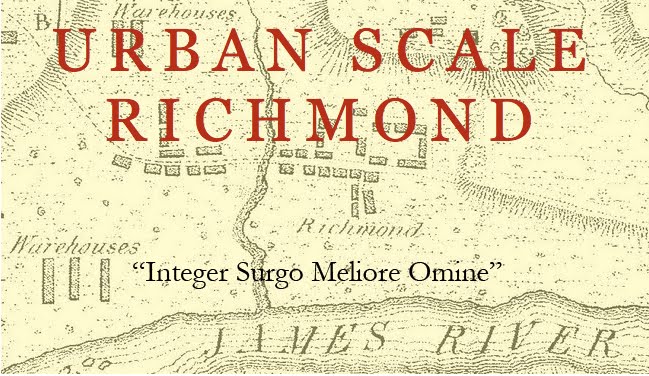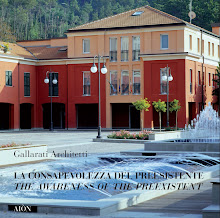Short Pump is an urban desert. It is a parody of a city. Its architecture is sterile, banal, and without imagination, exhibiting no architectural unity or integrity. This was not entirely true of earlier shopping centers. Mid-twentieth-century shopping centers and malls such as Willow Lawn and Southside Plaza were unified by an architectural idea- in this case, that of modernism- much as the great metropolitan markets of the past exhibited architectural unity. As a commercial mart, Willow Lawn made no attempt to memorialize the past. And at any rate the shopping centers of the 1950s were aligned with major shopping streets.
Willow Lawn soon after construction
“Downtown Short Pump” represents an unprecedented intrusion into the ancient patterns of humane life. It well merits its nickname at Urbanismo: “the Outer Circle of Hell.” Like chaos, Short Pump is without form and void, because it is changeless, timeless, one-dimensional, and circular, an endless passaggiata.
An axial view of one of the tentacles of Short Pump Town Center
Short Pump is changeless (the owners pride themselves on its seamless maintenance program). It is timeless (the recorded music is always playing). It is one-dimensional and undifferentiated, while the city is endlessly varied but unified (it is differentiated within an underlying matrix of order). It is circular-even though there are different paths, ultimately the experience consists in walking in circles, like the mall-walkers who avoid climate and traffic to get relentless exercise. Such anti-urbanism was not a characteristic of earlier manifestations of the shopping center. The ancestor of the mall, the nineteenth-century galleria, functioned as a street and was an integral part of the city, aligned with the larger civic life.
Galleria Mazzini, Genova
Short Pump has a few of the traditional features of a marketplace. Its monuments, such as a trite statue of Patsy Cline and the central fountain made up of a variety of hand pumps are humorless, literal, and derivative tropes on the monumental program of the actual city. It is a controlled environment with a fully developed literature of commerce. In its attempt to supplant the city, Short Pump Town Center has constructed a diminuative founding myth.
The "Short Pump Fountain" at Short Pump Town Center
Markets are properly miniature cities. The order of the marketplace is immediately apparent. Orthogonal aisles like streets organize the stalls. The market is placed in the urban context and responds to its patterns. While markets and fairs are controlled sectors of the city, they contain individual proprietors who are responsible for their success or failure. Although the quality of their produce is carefully policed by the city, markets offer no guarantee of happiness. Unlike the vapid crowds at Short Pump, markets are frequented by people from all stations of life. A flaneur is unlikely to find pleasure at Stony Point Fashion Park.
While its open air plan is welcoming to pedestrians, Short Pump Town Center is the antithesis of a real market and far less subtle even than an American shopping mall. Its essentially circular form defies any ordering principle both locally and on an urban scale. It doesn’t matter where you are in it. A sleepy urbanist might mistakenly see it as an improvement over a shopping mall because it more self-consciously resembles a town. In fact, it is not a fragment of a city but a commercial whirlpool.















I just discovered your blog...love it!!!!
ReplyDelete